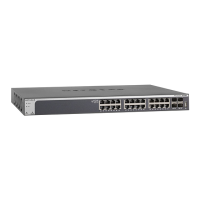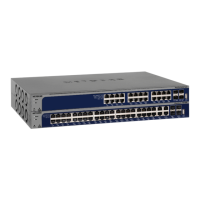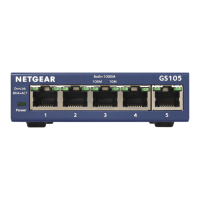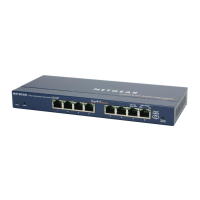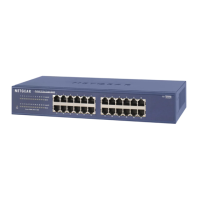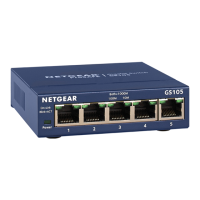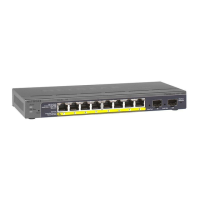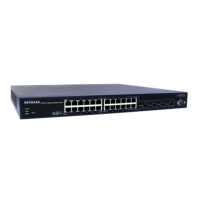Monitoring
152
XS728T ProSAFE 28-Port 10-Gigabit L2+ Smart Switch
To display a summary of per-port traffic statistics and clear or refresh the counters:
1. Select Monitoring > Ports > Port Detailed Statistics.
2. Select the Interface for which data is to be displayed.
3. Select the MST ID for which statistics are displayed.
The following fields are displayed for the selected interface in the selected MST instance:
• ifIndex. IfIndex of the interface table entry associated with this port on an adapter.
• Port Type. For most ports this field is blank. Otherwise, the possible values are:
• Mirrored. Indicates that the port has been configured as a monitoring port and is
the source port in a port mirroring session. For more information about port
monitoring and probe ports, see
Port Mirroring on page 160.
• Probe. Indicates that the port has been configured as a monitoring port and is the
destination port in a port mirroring session. For more information about port
monitoring and probe ports, see
Port Mirroring on page 160.
• Port Channel. Indicates that the port has been configured as a member of a port
channel, which is also known as a link aggregation group (LAG).
• Port Channel ID. If the port is a member of a port channel, the port channel interface
ID and name are shown. Otherwise, Disable is shown.
• Port Role. Each MST bridge port that is enabled is assigned a port role for each
spanning tree. The port role can be one of the following values: Root Port, Designated
Port, Alternate Port, Backup Port, Master Port, or Disabled Port.
• STP Mode. The Spanning Tree Protocol (STP) administrative mode for the port or
LAG. The possible values for this field are:
• Enable. Spanning Tree Protocol is enabled for this port.
• Disable. Spanning Tree Protocol is disabled for this port.
• STP State. The port current state spanning tree state. This state controls what action
a port takes on receipt of a frame. If the bridge detects a malfunctioning port, it places
that port into the broken state. The other five states are defined in IEEE 802.1D:
• Disabled
• Blocking
• Listening
• Learning
• Forwarding
• Broken
• Admin Mode. The port control administration state:
• Enable. The port can participate in the network (default).
• Disable. The port is administratively down and does not participate in the
network.
• LACP Mode. The Link Aggregation Control Protocol administration state:
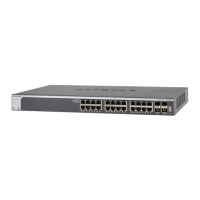
